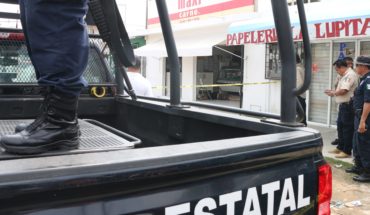photograph / T.CJ world-the first flying cars, which will begin to go through the urban airspace over the next decade, will have the capacity to carry up to eight passengers, anticipated the Deputy Director of communications and intelligence of NASA systems, Félix Miranda. “Expected that the first vehicles (flying) for people will be in the range between four, six and eight passengers,” said in an interview the Puerto Rican Miranda, who works at the center of research in Cleveland, Ohio NASA Glenn.
Miranda made these statements in the framework of the first meeting of the urban air mobility sector held these days in Seattle, at the stadium in Washington, and it is organized by the own NASA and the Federal Aviation Administration of the United States) FAA, by its acronym in English). “They will first have a pilot. Then, when you increase the autonomy (of vehicles) perhaps it will be without any pilot in the ship”, explained Miranda when asked about the appearance of future flying cars.
In this sense, explained that aerial vehicles to be moved in urban areas with cargo “will evolve a little faster because they don’t have to (consider) the details of comfort” that cars for people need. What both types of vehicles will share will be safety standards and certifications they need to be able to transit the airspace, including the regulators, like the FAA, and the own localities on which circulate, because going to have different regulations.
Photograph of male Vehicles of its prototype V-200 “that also will affect the type of vehicle is potentially going to be allowed to sail in the cities, depending on their local ordinances and the areas in which to travel”, specified. NASA expert also reviewed with different applications that will have these flying vehicles. For Miranda, the main use will be directed to the transport of people and goods “to decongest the city streets”, one of the main problems facing cities in the U.S. and that greatly affect the level of quality of life.
However, “also in sight use for emergency and other areas that need rapid transport between equidistant points within urban areas”, said the Puerto Rican. During the next years, Miranda considered that the main challenge will be to “verify what vehicles are going to be part of this scenario”. “They have to be properly validated so that they can be certified and you can navigate through the airspace of an a safe and robust, with the confidence of the public,” he said.
The challenges of urban air mobility industry include the safety of vehicles that transit over skyscrapers and buildings in U.S. cities in the coming years. In this regard, it will be important to validate that “they have contingency measures in case of having to face varying weather conditions,” being versatile, and who have a communication and sensor system that avoids “unexpected collisions”. “We must ensure that airspace navigation is convenient, effective and secure,” he added.
All these factors have analyzed these expert days of NASA and the FAA, together with companies in aeronautical engineering, safety, development of sensors and operations of fleets, among others, and different government bodies throughout the first UAM in Seattle industry meeting. During these days, NASA has presented part of a study that estimates that approximately 750 million people will use the Skytrain by 2030 in a half of metropolitan areas of the United States.
Source: Three antenna
translated from Spanish: The first flying cars, are not what you expected
November 4, 2018 |





